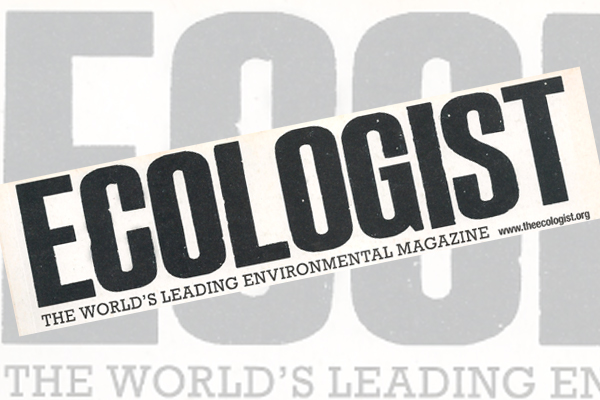What’s in This Stuff?

Pat Thomas launches an organic offensive against the toxic ingredients in what we buy – including pet products
Pets are exposed to the same chemicals in their diet and grooming supplies that people are. As consumers have become increasingly attracted to, and comfortable with, the use of natural and organic products themselves, they are becoming equally receptive to the use of natural products, including pest control and herbal supplements, for their pets. Indeed, a 1999 study led by one source, US Business Research, found that 22 per cent of pet owners had used some form of alternative therapy on their pet.
The pet care industry is big business. In the US, pet owners spend around $16 billion (£8.8 billion) a year on pet products. In Europe, they spend $18 billion (£10 billion). So, we spend a lot of money, but are we really making our pets’ lives better?
PETS UNDER ATTACK
Cats and dogs, which make up the majority of companion pets in the world, are now developing a vast list of degenerative diseases, including: autoimmune diseases, allergies, heart disease, diabetes, joint and arthritic problems, and cancer. By the age of three, some three-quarters of dogs will have developed gum disease, eye problems, ear problems, untreatable infestations of fleas and other parasites. Moreover, thyroid imbalances, personality disorders and birth defects are all becoming commonplace among our pets.
Meanwhile, even pet food itself has quite literally become a dog-eat-dog business – cat-eat-cat, too. According to a startling 2001 report from the US Animal Protection Institute (API), commercial pet foods contain mostly grain wastes and meat by-products, which can include everything from euthanised shelter animals to cancer-ridden livestock, road kill, downer animals (those unable to walk), mouldy grains and rancid restaurant grease. Feeding these low-in-nutrition packaged ‘scraps’ to pets greatly increases their chances of developing cancer and other degenerative diseases.
Improving your pet’s diet
Dogs and cats were designed to handle raw, uncooked foods. Owners can easily mix fresh cuts of meat (not ground) with wholegrains and vegetables for a balanced diet.
FLEA AND TICK CONTROL
Fleas and ticks are a profitable business for the chemical/pesticide industry, responsible for billions in sales every year. Pet owners are seduced into believing that these products are safe and effective, but read the warning label on conventional fl ea and tick products. Shampoos, dips, foggers (also known as ‘bug bombs’: pesticide products containing aerosol propellants that release their contents at once to fumigate an area) and collars – in fact, all conventional flea and tick treatments – caution users to wear gloves, and to keep the product away from skin and mucous membranes. And yet, these chemicals are being applied in some cases all over your pet, where they can be easily absorbed, inhaled or licked off by the pet.
Try these natural alternatives:
- Cedar shampoo, cedar oil and cedar-filled sleeping mats are available. Cedar repels many insects, including fleas.
- Make a herbal flea collar. Make up a mixture of ½tsp alcohol with one drop each of these essential oils: cedarwood, lavender, citronella and thyme. Add the contents of four garlic capsules. Buy a soft flea collar (untreated), soak in the mixture until it is thoroughly soaked, then leave it to dry completely. This will be effective for about a month.
- Add a few drops of tea tree oil to a herbal pet shampoo to repel fleas and help heal flea-bitten skin.
CAT LITTER
For litter-box-trained animals, holistic vets recommend avoiding conventional clay litters as they are laden with silica dust, a known carcinogen. Many ‘scoopable’ clay litters have also been found to cause intestinal blockages in cats and kittens when inadvertently consumed while grooming.
Try this instead …
- A good alternative is wheat-based litter that is scoopable, biodegradable and fl ushable.
- Some natural kitty litters make use of recycled, ‘pelletised’ paper. ¢ A third option is litter made from recycled pinewood waste.
Extracted from What’s In This Stuff? by Pat Thomas (Rodale Books, £12.99). Available to readers for £7.80 plus p+p, call 01256 302 699, quoting ‘L16’
- This book extract first appeared in the Ecologist October 2006 edition.












